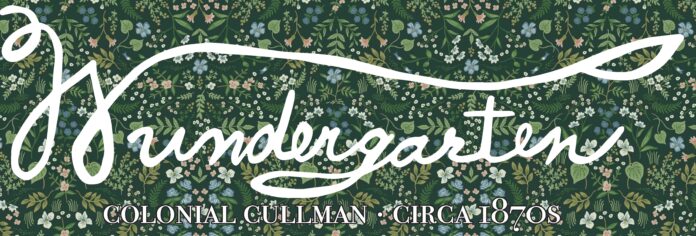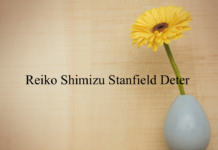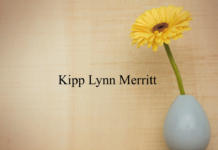Having fun while learning at the Sportsman Lake Tree Museum is as easy as A-B-C.
THE ABCs of TREES
A is for APPLE TREES—Exploring the great outdoors on your Alphabet Adventure at the Tree Museum begins with apples. Money may not grow on trees, but food does.
APPLE TREE and PECAN TREE CAMPFIRE TREAT
(Source: recipeland.com)
INGREDIENTS
- 4 apples
- 1/4 cup pecans, chopped
- 1/4 cup brown sugar
- 4 tsp. raisins
- 1/8 tsp. allspice
- 4 tsp. butter
DIRECTIONS
- In a small bowl, combine brown sugar, pecans, raisins and allspice.
- Core apples from the top, making a large enough hole in the center of apple for filling but not cutting the skin at the bottom.
- Place 1 tsp. butter in each apple, followed by a tablespoon of the filling.
- Wrap tightly in aluminum foil and place, top down, directly in hot coals.
- After 5 minutes, using long tongs, turn apples right side up and continue to bake for 3 to 5 minutes longer. Unwrap from foil, let cool a bit and savor.
A is also for Accredited Arboretum which the Sportsman Lake Tree Museum is, Acorns, ASH trees and Alabama Azaleas.
B is for BUTTERFLIES—Yesterday, when I was at the “Tree Museum,” butterflies were sipping the sweet nectar of the 8’ tall Joe Pye weed and flitting over the bridge in the Bird and Wildlife Sanctuary.
The Sportsman Lake Tree Museum was recently added to the sites across America of The First Lady Rosalynn Carter National Butterfly Trail.
B is also for Birds, Blueberries, BUCKEYE trees, BIRCH trees, BEECH trees, BOXELDER trees, Beneficial Bugs and Berries.
C is for CHERRY TREES—Few things are more American than the story of young George Washington, our first President, who chopped down a cherry tree in his parents’ garden and then fully tells the truth when asked about it. “I cannot tell a lie, father, it ‘twas I.” This is a great way to remind kids and all that when we make a mistake, be honest and tell the truth.
CHERRY trees are native to the American South, but some of the most famous came as a gift to America from the Japanese. The blooming of the Japanese CHERRY trees around the giant, “mirror lake basin” in our nation’s capital, thrills thousands of visitors each spring.
Topre America and Yutaka Technologies are two, fine, local employers with roots in Japan who find innovative ways to support the values of CULTIVATE CULLMAN. We’re eager to invite these community leaders to the new “tree museum” to explore how we could add more CHERRY blossoms to the beauty of the park.
C is also for CEDAR trees, CYPRESS trees, CRAB APPLE trees, Caterpillars, Columbine wildflowers, and CATALPA trees. And, how about building a “forest Chapel?” The tall oaks, pines and poplars in the “tree museum” CONNECT us with the heavens.
D is for DUCKS—one of the happiest pleasures for children of all ages at the Sportsman Lake Tree Museum to enjoy. Just hearing the cartoon-character quacking and seeing the waddling ducklings on their parade to the “mirror lake” brings happy smiles to all.
Ducks, geese, cranes and herons, all kinds of aquatic birds enjoy the lakeside “marsh sanctuary.” Bring your Smartphone to take photos of these beautiful birds and enjoy the fine-feathered array of colors from Mallard green to Blue Heron to new baby yellow.
D is also for DOGWOOD trees and digging in the dirt as a volunteer arboretum ambassador. Every Tuesday from 10am-12noon, Cullman County Master Gardeners work alongside community volunteers in the Tree Museum. Just show up with your garden gloves and a bottle of cool water and join us.
E is for ELM TREES—with giant, spreading limbs that look like green fountains. In autumn, ELM leafs turn golden. ELMS were the most popular trees for lining the city streets in Colonial America. The famous “Liberty Tree” in Colonial Boston was a stately ELM.
We want to designate a “Liberty Tree” honoring the veterans of the War Memorial at Sportsman Lake Park. An ELM would be a magnificent, beautifully natural salute.
E is also for ELDERBERRY, and even though they are not native plants, we have some elegant and exotic “Elephant Ear” plants to enjoy at Sportsman Lake Park.
F is for FIG TREES—which according to Tony Glover, one of our state’s greatest plantspeople, “Every landowner in Alabama should grow a FIG TREE.” Tony has been the decades-long advocate for Cullman County, his home county, to have an accredited arboretum. Just last week, Tony’s dream for this “living tree museum” was made reality with the recognition from ArbNet of the Sportsman Lake Tree Museum. This Fall, once the soil cools down, we will invite Tony to plant a FIG TREE or five.
FIG TREE FRUIT GRILLED with GOAT CHEESE
(Source: seriouseats.com)
INGREDIENTS
- 20 ripe figs
- 4 oz. soft goat cheese
- 2 tbsp. olive oil
- 2 tbsp. balsamic vinegar
- 1 tbsp. roughly chopped fresh rosemary
DIRECTIONS
- Cut off the stem of each fig, then cut two slits from the top of the fig to 3/4-way down in an X-pattern like the red cross on the Alabama state flag, which creates a pocket in the middle of the fig. Stuff each fig with about 1 teaspoon of goat cheese.
- Place a cooking grate over hot coals, cover grill and allow to preheat for 5 minutes. Clean and oil the grilling grate. Lightly brush figs with olive oil and place on grill. Cover and cook over medium heat until figs are softened and brown slightly, about 5 to 8 minutes.
- Remove figs to serving tray; drizzle with balsamic vinegar and sprinkle with rosemary. Serve immediately.
F is also for: Forest, Frogs, FILBERT trees, FRINGE trees, Forsythia and FIR trees.
G is for GOLDENROD—This native plant to Alabama was the official state flower from 1927 to 1959, when it was questionably replaced by the Asian camellia. Goldenrod is underappreciated and misunderstood. (Can you relate?) Often people wrongly confuse goldenrod with ragweed and start sneezing just thinking about it. Goldenrod is a crucial plant for a healthy ecosystem in Alabama. Beautiful, contributing GOLDENROD is a KEYSTONE PLANT (see the letter “K”)
G is also for: Grasses, Garden and GINGKO tree.
H is for HOLLY—American holly is a native plant and perfect for attracting winter birds for the bright red berries and inviting bunnies to shelter beneath. This is the traditional, Christmas holly. As we remove invasive hollies like (trying not to cuss here) “dreaded mahonias” from the Bird and Wildlife Sanctuary at the Sportsman Lake Tree Museum, we are replacing them with native, American hollies.
H is also for: Hiking (there are 5 miles of hiking trails throughout the Sportsman Lake Park) and HORSE CHESTNUT trees, HAWTHORN trees, HICKORY trees, and HORNBEAM trees.
I is for IRONWOOD—a really tough understory tree. IRONWOOD is disease-resistant and “tough as iron.” Tough, tolerant IRONWOOD is a great tree for planting along highways and for home landscapes.
I is also for Indian corn, Indigo bush and ILEX tree.
J is for JASMINE—a gloriously fragrant, woody stemmed, determined vine. The scent is considered an “Oriental,” though the highly perfumed plants perfectly evoke the American South.
J is also for JUNIPER evergreens.
K is for KEYSTONE PLANTS—which have a disproportionately large effect on the natural world where they grow relative to their abundance. These native plants are essential to support 90% of caterpillars that in turn allow birds to make babies and help the native bee species to continue. We are re-imagining the steep “power line” right of way at the Sportsman Lake Tree Museum to be a “vertical meadow pollinator rise” filled with goldenrod, native sunflowers and blueberry shrubs—three major, KEYSTONE PLANTS.
K is also for KENTUCKY COFFEETREE.
L is for LOBLOLLY PINE—like the 100’ tall one we call “The Grandfather Pine” in the Tree Museum. You’ll find this handsome giant at the entrance to the “birding trail.”
L is also for LAUREL tree, LINDEN tree, and logs.
M is for MAGNOLIA—like the Southern Magnolia we call “The Grandmother Magnolia” at the base of the Tree Museum slope across from the potting shed. She spreads her loving arms to embrace all.
M is also for MUSHROOMS which abound throughout the Sportsman Lake Tree Museum. We have begun a “Mushroom Stumpery” to showcase the beauty and tasty nutrition of the fungus among us. Foraging expeditions are led by the Alabama Mushroom Society regularly in the Tree Museum.
M is for MAPLE tree and Mulberry, too.
N is for NUT TREES—a healthy protein source. Common in our growing zone are these nut trees: PECAN trees, WALNUT trees and CHESTNUT trees.
O is for OAK TREES—which, according to the esteemed naturalist, Doug Tallamy, “support more forms of life and more fascinating interactions than any other tree genus in North America…A yard without oaks is a yard meeting only a fraction of its life-support potential.” Every tree-lover in America should have a dog-eared copy of “The Nature of Oaks” by Douglas W. Tallamy on their nightstand.
O is also for OAKLEAF HYDRANGEA, Alabama’s official state wildflower shrub. This week is a lovely time to enjoy big, white blossoms of this beloved plant in the Sportsman Lake Tree Museum.
P is for PINE TREES—found round the globe. Here are some favorites: Jerusalem Pine, Austrian Pine, Bristlecone Pine, Eastern White Pine, Foxtail Pine, Gray Pine, Jack Pine, Japanese White Pine (popular for bonsai), Loblolly Pine (like “The Grandfather Pine”), Longleaf Pine, Mexican Weeping Pine, Mugo Pine (perfect for The Rock the South Rock Garden at Sportsman Lake Tree Museum), Pitch Pine, Ponderosa Pine, Red Pine, Scots Pine, Pinyon Pine, Sugar Pine, Turkish Pine, Virginia Pine and Western White Pine.
P is also for PERSIMMON trees, PECAN trees, PALMETTO trees, PAWPAW trees, picnics and a PARTRIDGE in a PEAR TREE.
R is for RED MAPLE—a common and widespread deciduous tree in the U.S., east of the Mississippi River. This ruby-leafed beauty is one of the most spirit-warming and treasured trees in an autumn landscape.
R is also for REDBUD trees, REDWOOD trees and Rocks.
S is for SUNFLOWERS—a “keystone plant” that birds, bees, butterflies, and humans savor. The best SUNFLOWERS for seed-snacking are: Mammoth Grey Stripe, Mongolian Giant, and one aptly sold as “Super Snack.”
S is also for Sanctuary, Stumpery, SUGAR MAPLE tree, Silverbells, SOURWOOD tree, SWEETGUM tree and SYCAMORE tree.
T is for TANNEBAUM—German for “Christmas tree.” In the 1800s, Queen Victoria and her German husband, Prince Albert, popularized the tradition of decorating a tree indoors at Christmastime. Though, based on her diary entry as a 13-year-old princess, Victoria loved Christmas trees long before she loved Albert: “After dinner we went into the dining room. There were two large round tables on which were placed two trees hung with lights and sugar ornaments. All the presents being placed round the trees…”
T is also for Twig, Treehouse, Toads, Trails, and the kiddie train at the Sportsman Lake Tree Museum.
U is for UMBRELLA TREE—another name for the houseplant, Schefflera. Generally kept compact and short, this native of China can grow to 8 feet tall.
V is for VIBURNUM—popular as a woody, landscape shrub because of their showy, “pom pom” flowers, berries, and honeyed scent. The wood from viburnums was once used by Native American tribes to carve hunting arrows.
V is also for VINES, many like clematis and honeysuckle have woody stems and are considered “tree-like” in that way.
W is for WEEPING WILLOW—the ideal tree to be reflected in a “mirror lake” like the acres-large, popular pond at the Sportsman Lake Tree Museum. WEEPING WILLOWS are mostly ornamental and are appreciated for their sweeping, pendulant branches. Native Americans used this tree to create musical flutes, and to form paintbrushes.
W is also for WITCH HAZEL trees, WALNUT trees, Wildflowers, Woodlands and Water.
X is for XERIC—which means “very dry” and is a popular exploration for gardeners as our planet warms. Xeric gardens are regularly populated with drought-resistant plants native to the zone.
Y is for YELLOWWOOD TREES—which are native to north and central Alabama. YELLOWWOOD produces a cool canopy of shade for the hot summer and sculptural limbs in winter. The fragrant, white blooms in early summer are delightful.
Y is also for YARROW herb, and YAUPON HOLLY.
Z is for ZONE—an important thing to know for anyone wanting a tree to grow in Brooklyn, NY, or Brooklyn, FL or Brooklyn, CA. The Sportsman Lake Tree Museum is in USDA Hardiness Zone 7b in Cullman County–Alabama’s no. 1 county in agriculture. Two of the hardiest woody plants to grow in this zone are blueberry bushes and tulip poplars trees.
Z is also for ZELKOVA, a Japanese ornamental tree with specimens living a thousand years.
So, there you have THE ABCs of TREES from the newly accredited arboretum—SPORTSMAN LAKE TREE MUSEUM (FREE and open to All, 365 days each year). Please pack a picnic soon and come enjoy the summer shade under the OAKS, ELMS, PINES, MAGNOLIAS, MAPLES, POPLARS, WALNUT TREES…
HAPPY SUMMERTIME and AUF WIEDERSEHEN Y’ALL!
Find all columns in this series at www.cullmantribune.com/tag/celebrating-in-the-wundergarten.



























